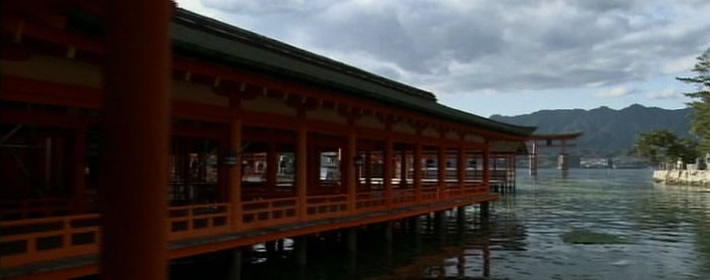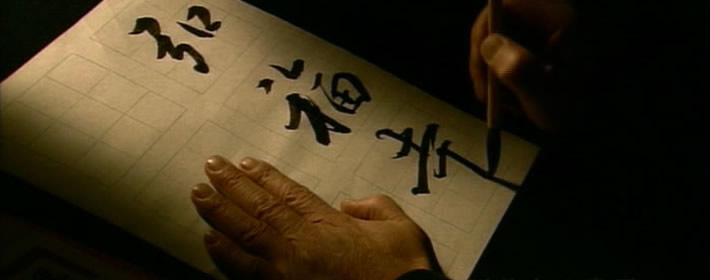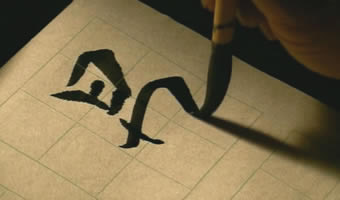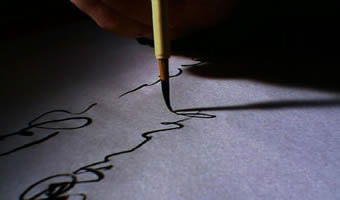Heian periodCosmic world of Fude

Emergence of the "Sanpitsu" and the "Sanseki"
Birth of Kana and Japanese culture ~"Wayo fude"~Japanese style Fude
In the early Heian period, Kouboutaishi・Kuukai brought a major change in the world of Japanese calligraphy. Kuukai brought back Tantric Buddhism from Tang dynasty of China, which is later called Shingon Buddhism. He also brought back numerous works of arts, and succeeded in delivering the true essence of the continent's culture. Among the things that he brought back was a Fude making process and calligraphy. A variety of styles are seen in Kuukai’s surviving calligraphies; from the orthodox style seen in "Fushinjou”, a collection of letters written to Saicho, to “Hihakutai” (Flying white style) in which the technique of dry strokes with quick movements of a Fude was used. He ordered the production of different kinds of Fude for various calligraphy styles and presented them to Emperor Saga, along with the instruction on how to make them. During this period, calligraphers Kuukai, Emperor Saga, and courtier Tachibana no Hayanari were referred to as the Sanpitsu ("three great Fude"), and their calligraphy styles became a foundation for the unique Japanese culture which are to blossom in the coming era.

Calligraphy styles of the master calligrapher Ou Gishi (Wang Xizhi)
In Heian period, Japanese Kana scripts emerged as a major calligraphy style. Among the imperial nobles, essays and literaries written about the glamorous lives of imperial lords became popular, and around the circle of imperial court, female writers had a great success. It was during this period when "Genji Monogatari"(Tale of Genji) was written, which is referred to as the greatest work in Japanese literature. As the culture of Kana scripts developed, the Fude specifically designed to write Kana scripts were needed. A Japanese Fude with thin and longer tip of original design was created. It was the birth of "Wayo-fude", a Japanese Fude. For the material used for the Fude, firm hair such as deer's was preferred instead of soft hair of raccoons and rabbits that had been traditionally used.
In the middle of Heian period, Japanese calligraphers called the “Sanseki” (three traces); Ono no Michikaze, Fujiwara no Sari and Fujiwara no Yukinari appeared in the scene, and truly Japanese calligraphy style called “Wayo” (Japanese mode) was established. Its lines are soft and fluid, and not like the sharp and rigid lines of Chinese calligraphy. In the world of arts and crafts, "Heike Noukyou" presented the ultimate beauty of imperial culture. It was a hand-copied sutra donated to Itukushima shrine in Aki by Taira no Kiyomori. It consisted of 33 volumes in all, and each volume was dedicated by a member of Heike family. With the perfect harmony created by its calligraphy and the use of exquisite gold-decorated papers, it is undoubtedly one of the best works of Shakyou which represents the late Heian period.
 “Hihakutai” (Flying white style)
“Hihakutai” (Flying white style) Calligraphy styles of Kuukai
Calligraphy styles of Kuukai  “Heike Noukyou”
“Heike Noukyou”  “Wayo-fude”
“Wayo-fude”